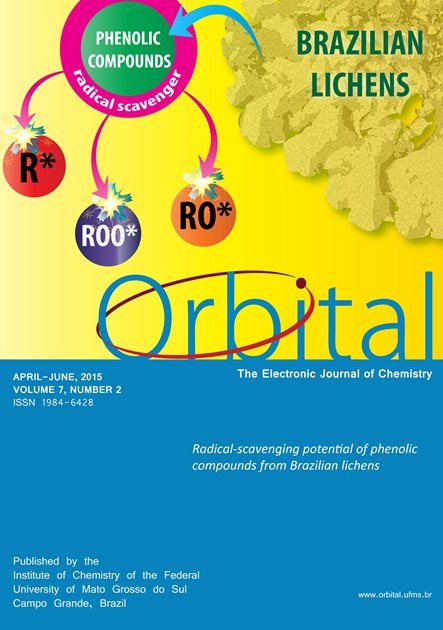QSAR Studies of Toxicity Towards Monocytes with (1,3-benzothiazol-2-yl) amino-9-(10H)-acridinone Derivatives Using Electronic Descriptors
- acridinone,
- anti-proliferative,
- QSAR,
- DFT,
- MLR
Copyright (c) 2015 Orbital: The Electronic Journal of Chemistry

This work is licensed under a Creative Commons Attribution-NonCommercial-NoDerivatives 4.0 International License.
Abstract
DFT-B3LYP method, with the basis set 6-31G (d), was employed to calculate nine quantum chemical descriptors of 16 acridin-9-(10H)-ones substituted with amino or (1,3-benzothiazol-2-yl)-amino groups compounds. The above descriptors were used to establish a Quantitative Structure Activity Relationship (QSAR) of the Anti-proliferative towards human monocytes activity of these compounds by Multiple Linear Regression (MLR), Multiple Non Linear Regression (MNLR) and Artificial Neural Network (ANN). The statistical results indicate that the correlation coefficients R were 0.864, 0.908 and 0.844 respectively. Results showed that the three modeling methods can provide a good prediction of the studied activity and may be useful for predicting the bioactivity of new compounds of similar class, and showed that the Multiple Non Linear Regression (MNLR) results have substantially better predictive capability than the MLR and ANN. The statistical results indicate that the models are statistically significant and show very good stability towards data variation in leave one out cross validation.


